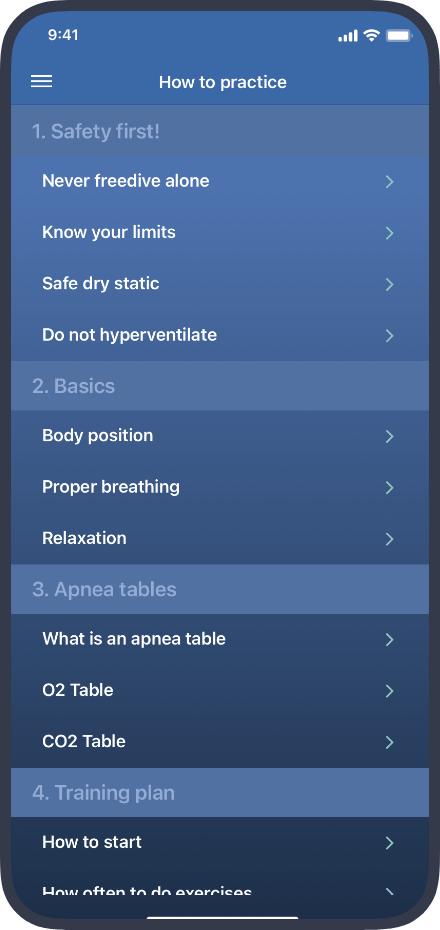Apnea tables
What is an apnea table
There are various methods to develop breath-holding skills. Some of these methods are built around a series of breath-holds (apnea) and recovery (rest) intervals, with specific lengths to pursue different goals — so-called apnea tables.
There are two classic types of exercises: an O2 (Oxygen) table and a CO2 (Carbon dioxide) table. Despite the fact that in modern freediving schools there are far more different kinds of tables, most of them are variations of these two.
О2 Table
The O2 tables are meant to help adapt a body to low oxygen levels. During an O2 table training, a trainee is holding his/her breath for a longer time each round with a constant rest time. Here is an example:
Apnea: 1:00, Rest: 1:30
Apnea: 1:30, Rest: 1:30
Apnea: 2:00, Rest: 1:30
Apnea: 2:30, Rest: 1:30
Apnea: 3:00, Rest: 1:30
Apnea: 3:30, Rest: 1:30
Apnea: 4:00
In the table above there is a constant rest time of 1:30, and the apnea time starts with 1:00 and increases each round by 0:30.
CO2 Table
The CO2 tables build a tolerance to high levels of carbon dioxide in the blood. A rest time in this kind of table decreases with each round while an apnea time stays the same:
Apnea: 2:00, Rest: 1:45
Apnea: 2:00, Rest: 1:30
Apnea: 2:00, Rest: 1:15
Apnea: 2:00, Rest: 1:00
Apnea: 2:00, Rest: 0:45
Apnea: 2:00, Rest: 0:30
Apnea: 2:00, Rest: 0:15
The apnea time is constant: 2:00, the rest time starts from 1:45 and decreases by 0:15.
Read next: Training plan


